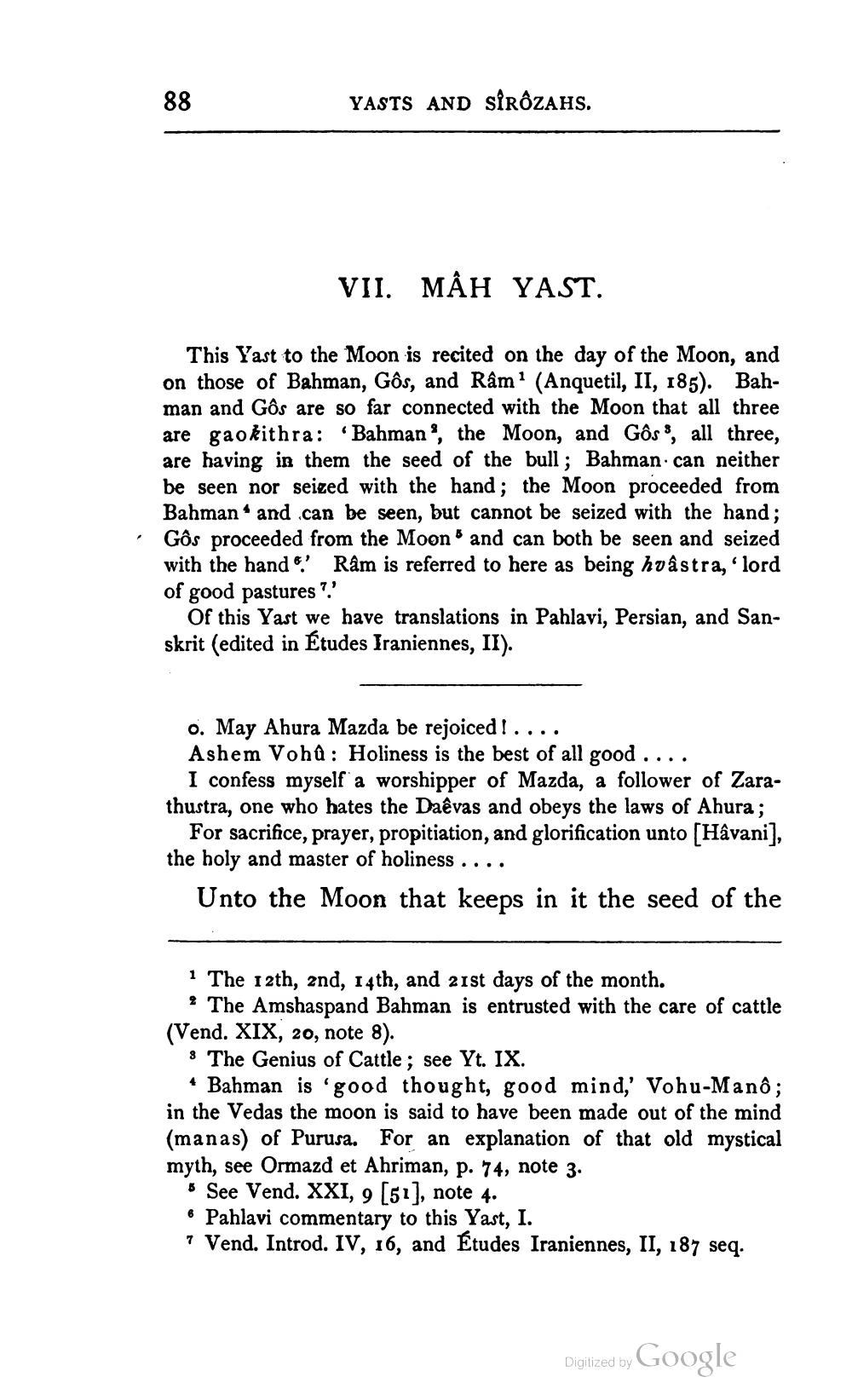________________
X
YASTS AND SÎRÔZAHS.
VII. MÂH YAST.
This Yast to the Moon is recited on the day of the Moon, and on those of Bahman, Gôs, and Râm? (Anquetil, II, 185). Bahman and Gôs are so far connected with the Moon that all three are gaokithra: 'Bahman, the Moon, and Gôso, all three, are having in them the seed of the bull; Bahman can neither be seen nor seized with the hand; the Moon proceeded from Bahman. and can be seen, but cannot be seized with the hand; Gôs proceeded from the Moon and can both be seen and seized with the hand &.' Râm is referred to here as being hvâstra,“ lord of good pastures ?
Of this Yast we have translations in Pahlavi, Persian, and Sanskrit (edited in Études Iraniennes, II).
o. May Ahura Mazda be rejoiced!... Ashem Vohû: Holiness is the best of all good.
I confess myself a worshipper of Mazda, a follower of Zarathustra, one who hates the Daêvas and obeys the laws of Ahura;
For sacrifice, prayer, propitiation, and glorification unto [Hávani], the holy and master of holiness ....
Unto the Moon that keeps in it the seed of the
1 The 12th, 2nd, 14th, and 21st days of the month.
2 The Amshaspand Bahman is entrusted with the care of cattle (Vend. XIX, 20, note 8).
8 The Genius of Cattle; see Yt. IX.
* Bahman is 'good thought, good mind,' Vohu-Manô; in the Vedas the moon is said to have been made out of the mind (manas) of Purusa. For an explanation of that old mystical myth, see Ormazd et Ahriman, p. 74, note 3.
o See Vend. XXI, 9 51, note 4. * Pahlavi commentary to this Yast, I. 7 Vend. Introd. IV, 16, and Etudes Iraniennes, II, 187 seq.
Digitized by Google




